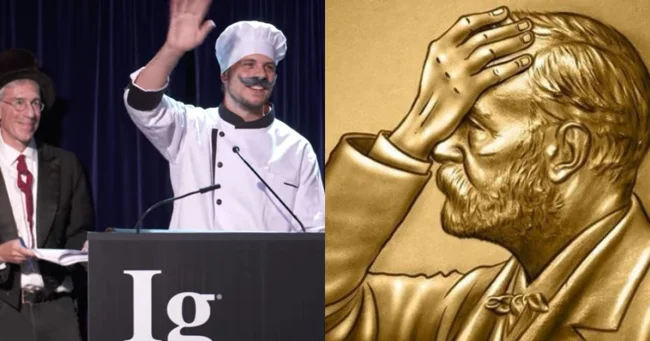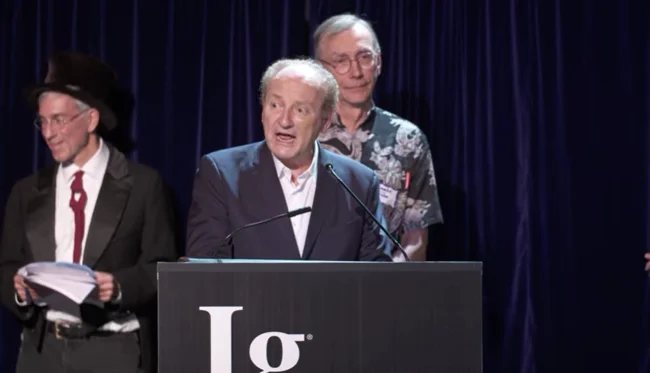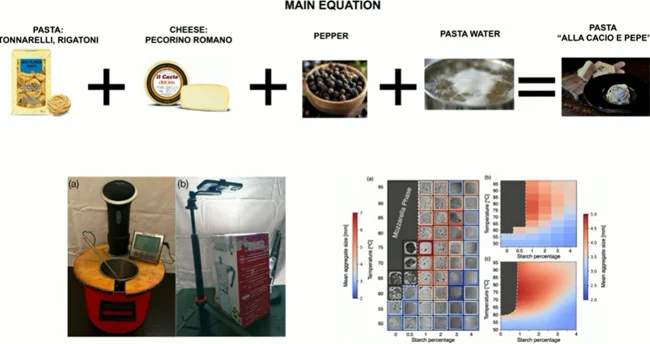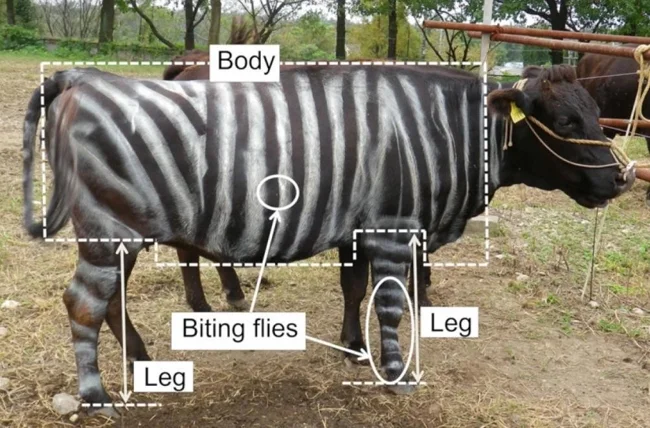Striped Cows and the Teflon Diet: Ig Nobel Prize Winners Announced (5 photos)
The Ig Nobel Prize was first awarded for unusual discoveries in 1991. This year, the mock ceremony was held for the 35th time. 
No more Ozempic – scientists have found a new way to make people thin, and even received the Ig Nobel Prize in Chemistry for it. The radical method proposed by these luminaries involves feeding people Teflon.
Dr. Rotem Naftalovich and his brother, Daniel, were inspired by zero-calorie soda and suggested that manufacturers mix powdered Teflon into food to create a feeling of fullness and then be easily eliminated from the body. The Naftalovichs calculated that Teflon could make up to a quarter of a product's weight. The brothers even made test chocolate bars with Teflon and ate them. However, the U.S. Food and Drug Administration dismissed the Naftalovichs' idea.
This team was one of ten recognized this year at the Ig Nobel Prize. The award is given for research that first makes you laugh and then makes you think. Don't confuse this award with the Nobel Prize (although sometimes the Nobel committee's choices also make you laugh and then make you think).
The new laureates received their awards from the current Nobel laureates at Boston University on September 18. 
Ig Nobel Peace Prize Laureate
The Peace Prize was awarded to a German-Dutch-British team that demonstrated that a shot of vodka improves foreign language proficiency. Psychologist Fritz Renner of the University of Freiburg concluded that a small dose of alcohol gives a person confidence in their linguistic abilities without causing them to slur their words.
"But this doesn't mean that people became perfect speakers of Dutch after just one drink," added psychologist Matt Field of the University of Sheffield, who participated in the study.
While communicating with foreigners became easier after drinking, flying was not. The Aviation Prize was awarded to researchers who got fruit bats drunk. The intoxicated animals became slower, and their echolocation became erratic, much like the speech of a drunk person. The scientists concluded that the animals, having eaten fermented fruit, crashed into walls and trees more often than their sober counterparts.
The pediatrics prize was awarded to Americans who studied the effect of maternal diet on the taste of breast milk. It turned out that babies nursed longer if their mothers ate garlic. 
Scientists take a humorous view of the prize, and traditionally pelt the laureates with paper airplanes.
Italians won the Physics Prize for explaining the mechanism by which lumps form in cacio e pepe (pasta with cheese and peppers). Their research led to an improvement in the pasta recipe.
Scientists also discovered that the common agama lizard loves Four Cheese pizza and will prefer it to any other delicacy. For this discovery, they were awarded the Ig Nobel Prize in Nutrition.
Indians won an engineering prize for creating a shoe rack that neutralizes sneaker odor. They simply added an ultraviolet lamp to a standard shoe cabinet. 
Presentation slide with the Italian laureates' opening
Ig Nobel Prize-winning psychologists have proven that if people are told they have above-average intelligence, they believe it and begin to boast about it.
Dr. Tomoki Kojima of the National Institute of Agriculture and Food Research in Japan won the biology prize. His team painted cows white to resemble zebras and demonstrated that striped cows are less likely to be bitten by flies. 
The literary prize was awarded posthumously to the late William Bean of the University of Iowa. In a series of articles, he documented the growth of fingernails and toenails over a 35-year period. His son, Bennett, said his family had always supported him and accepted the prize on his father's behalf:
"He would have been thrilled, would have written the perfect acceptance speech, and would have said, 'Finally, recognition!'"






























